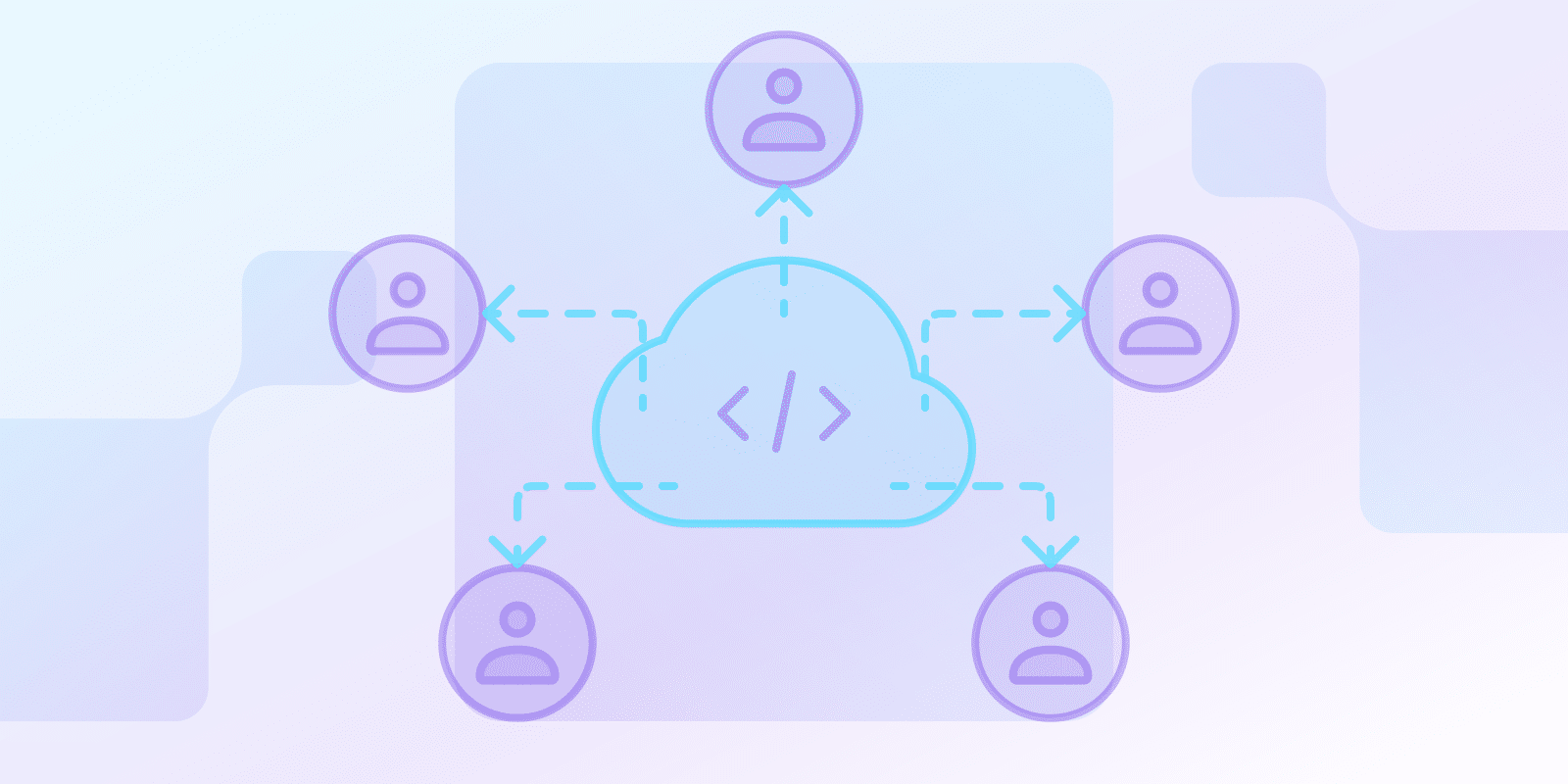modelos de implantação em nuvem
O que é um modelo de implantação de nuvem pública?
Publicado: 11 de outubro de 2024
Última atualização: 4 de fevereiro de 2025

O que é uma nuvem pública?
A nuvem pública, também conhecida como nuvem externa, é uma forma de computação em nuvem que envolve um terceiro fornecendo aos clientes finais acesso aos recursos de computação necessários, como servidores, aplicativos e espaço de armazenamento, por meio da Internet. Os serviços de nuvem pública operam em uma base de 'pague conforme o uso'.
Pense nisso como alugar um apartamento e morar lá sem a obrigação de manutenção. Alguns provedores de nuvem pública são Amazon Web Services (AWS), Microsoft Azure e Google Cloud Platform (GCP).
Quais são os 3 principais tipos de modelos de implantação em nuvem?
Os principais modelos de implantação em nuvem são a nuvem pública, nuvem privada e nuvem híbrida. Cada modelo é voltado para as necessidades e demandas de um determinado grupo de usuários. A nuvem pública oferece recursos compartilhados para eficiência de custos, a nuvem privada fornece recursos dedicados para controle aprimorado e a nuvem híbrida combina ambos para flexibilidade. O modelo ideal para sua organização depende de requisitos específicos como segurança, orçamento e nível desejado de controle.
Como a nuvem pública se compara à infraestrutura local?
A nuvem pública difere da infraestrutura local por propriedade, estrutura de pagamento, flexibilidade, assistência e abertura. Portanto, enquanto os recursos da nuvem pública são de propriedade e executados pelo CSP de terceiros, os recursos locais são de propriedade e executados pela própria empresa. Isso resulta em variações de custos, escalabilidade e responsabilidades.
| Recurso | Nuvem Pública | Infraestrutura Local |
|---|---|---|
| Propriedade e Controle | ||
| Propriedade de Recursos | Propriedade de provedor de serviços em nuvem terceirizado | Propriedade da empresa |
| Gestão de Infraestrutura | Gerenciado por provedor de serviços em nuvem | Gerenciado internamente pela equipe de TI da empresa |
| Custo e Modelo Financeiro | ||
| Estrutura de Preços | Pagamento por uso | Investimento inicial e despesas contínuas de manutenção |
| Despesa de Capital | Custos iniciais mínimos | Custos iniciais significativos com hardware e configuração |
| Escalabilidade e Flexibilidade | ||
| Escalonamento de Recursos | Escalonamento instantâneo para atender às demandas variáveis | Requer atualizações de hardware para escalonamento |
| Acessibilidade | Acessível via internet de qualquer lugar | Restrito ao acesso local |
Quais são as vantagens e desvantagens da nuvem pública?
Nuvem pública é um modelo de computação em nuvem onde um provedor terceirizado entrega recursos de computação com infraestrutura compartilhada e fácil escalabilidade de recursos.
No entanto, em ambientes de nuvem pública, os dados são armazenados em vários servidores em data centers de propriedade e gerenciados por provedores de serviços em nuvem (CSPs), onde os usuários não têm controle direto sobre esses servidores e menos controle sobre a infraestrutura subjacente em comparação com soluções locais.
Se você optar pela nuvem pública, conduza uma pesquisa completa sobre os provedores e implemente medidas de segurança robustas para proteger seus dados.
Quais são alguns exemplos de provedores e serviços de nuvem pública?
Algumas das principais soluções de nuvem pública incluem AWS, Azure e GCP. Seus serviços incluem:
- Infraestrutura como serviço (IaaS): Máquinas virtuais, armazenamento e também rede.
- Plataforma como serviço (PaaS): Soluções baseadas em nuvem para desenvolvimento e implantação de aplicativos.
- Software como serviço (SaaS): Aplicações armazenadas na nuvem (como Salesforce, Dropbox e outras).
Visite os sites da AWS, Azure e GCP para obter mais informações sobre as opções adaptadas às necessidades da sua organização.
Conclusão
A nuvem pública é um modelo de computação em nuvem que envolve um provedor terceirizado para empresas de todos os tamanhos. Ao entender seus recursos, benefícios e considerações, você pode determinar se ele é adequado para sua organização.